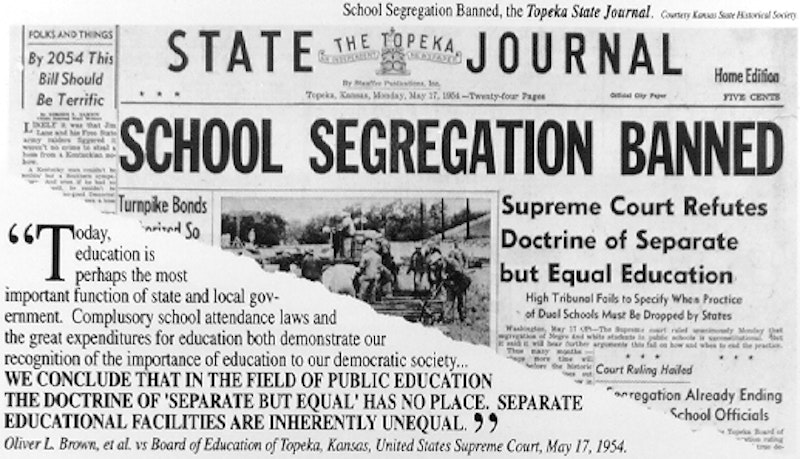Study Notes
Brown v Board of Education 1953
- Level:
- A-Level
- Board:
- AQA, Edexcel, OCR, IB
Last updated 22 Mar 2021
This Supreme Court case ruled that ‘separate but equal’ was inherently unequal through the deeming on state laws on segregated schools as unconstitutional. It overturns the Plessy v Ferguson 1896 decision.

Background to the case:
The notion of ‘separate but equal’ was enshrined in US race relations since the Plessy v Ferguson case, as under this case it did not violate the 14th Amendment or Equal Protection Clause. The arguments in Brown v Board of Education was that the separate provision of educational accommodation for black Americans was inferior next to the facilities available to white Americans.
The Case:
The suit brought against the Board of Education in Topeka Kansas, was by 13 parents on behalf of their children and called for the school district to end racial segregation. Under Kansas state law school districts were allowed to operate separate schools for both black and white students. The main driving factor behind the case was that some children had to travel long distances to school when the closest school was in fact a white school. The NAACP got involved in the case and attempted to enrol children in the school closest to them but were rejected.
The lower courts ruled in favour of the Board of Education and cited Plessy v Ferguson as a precedent.
The case when before the Supreme Court, was actually a combination of five cases all with similar issues in different states. The Supreme Court heard the case twice in order to build a unanimous opinion as it was felt that a unanimous opinion wouldn’t give segregation supports a legitimate counter claim. The case was high profile and the Chief Justice, Earl Warren was summoned to the White House to try and be persuaded by President Eisenhower to continue the Plessy v Ferguson precedent.
The court found that segregation deprived children in the minority of equal educational opportunities, and as such separate but equal has no place. Separate educational facilities are inherently unequal. It violates the Fourteenth amendment.
Decision:
Unanimous decision handed down declared separate but equal was inherently unequal and violated the 14th Amendment.
You might also like
The Bill of Rights
Study Notes
Engel v Vitale 1962
Study Notes
Summary of Landmark Supreme Court Rulings
Study Notes

The US Judicial system explained
5th February 2016

Primer on the US Supreme Court
27th October 2016
Moving towards the US Supreme Court's first black female justice
28th January 2022
Heads up on great civil rights documentary
5th April 2022